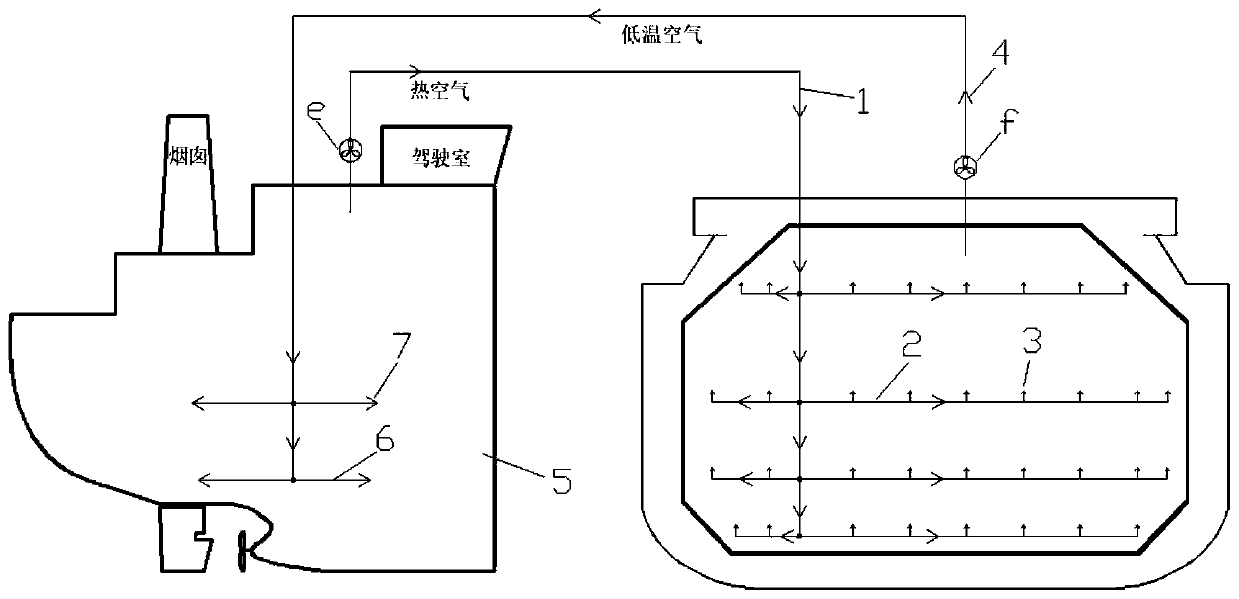Dry compartment heat preservation system utilizing LNG ship engine room hot air
A technology of hot air and compartment, applied in some cabins in the hull, hull ventilation/heating/cooling, hull and other directions, can solve the problems of inability to use directly, too much heat dissipation, waste of heat energy, etc., and achieve great practical application value and save energy. , the effect of improving the economy
- Summary
- Abstract
- Description
- Claims
- Application Information
AI Technical Summary
Problems solved by technology
Method used
Image
Examples
Embodiment Construction
[0023] In order to make the object, technical solution and advantages of the present invention clearer, the present invention will be further described in detail below in conjunction with the accompanying drawings and embodiments.
[0024] Such as figure 1 , is a schematic diagram of the piping system of the engine room of the present invention and any dry compartment. This dry compartment thermal insulation system utilizing the hot air in the engine room of an LNG ship mainly includes a dry compartment part and an engine room part. Wherein, the dry compartment part mainly includes: hot air blower (e), hot air duct (1), dry compartment air supply branch pipe (2), dry compartment branch pipe outlet (3); the engine room part mainly includes : air cooler (f), low-temperature air duct (4), engine room (5), engine room air supply duct (6), engine room air supply duct outlet (7).
[0025] Wherein, the inlet of the hot air pipeline (1) is at the uppermost part in the engine room (5...
PUM
 Login to View More
Login to View More Abstract
Description
Claims
Application Information
 Login to View More
Login to View More - R&D
- Intellectual Property
- Life Sciences
- Materials
- Tech Scout
- Unparalleled Data Quality
- Higher Quality Content
- 60% Fewer Hallucinations
Browse by: Latest US Patents, China's latest patents, Technical Efficacy Thesaurus, Application Domain, Technology Topic, Popular Technical Reports.
© 2025 PatSnap. All rights reserved.Legal|Privacy policy|Modern Slavery Act Transparency Statement|Sitemap|About US| Contact US: help@patsnap.com



